America’s demographics are changing. Are these 5 dangerous myths about multicultural marketing sabotaging your organization’s future? Like the moving of earth’s tectonic plates, the makeup of North America’s markets are changing right beneath our feet—and many of us hardly even notice. Depending on where you live, you may or may not see it playing out in your neighborhood. But it is happening.
Now more than ever, marketers, sales professionals, and fundraisers of every sector will have to embrace multicultural marketing as a foundational pillar of how they go about their work.
Every day, I’m encouraged by how many business and nonprofit leaders intuitively understand this.
But there are countless myths out there about multicultural marketing.
And if you believe these, your marketing efforts will be as effective as a blind-folded child swinging at a piñata.
So let’s look closer at these myths and shed some light on the subject one by one.
MYTH #1: NO NEED TO CHANGE – WE’VE GOT TIME.
It worries me how many organizations think they’ve got the time to wait before shifting to a multicultural marketing strategy that reflects the United States’ changing demographics.
I get it. Change isn’t easy.
It takes time, money, and a whole lot of effort to implement a successful multicultural marketing strategy.
It’s tempting to procrastinate when faced with the massive challenge of transforming how we think about marketing our goods, services, or causes.
Why not kick the can down the road and let someone else deal with it?
Because market demographics have alreadyshifted.
We’re no longer looking at a distant reality. The markets in the United States have already changed profoundly.
From now on, it’s only a matter of how quickly market demographics will continue to diversify.
“Nearly all 25 of the most populated counties in major DMAs like Los Angeles, New York, Chicago, Dallas, Houston and Miami are multicultural majorities. Because these geographies tend to be imperative for achieving many brands’ growth objectives, a multicultural marketing strategy also becomes imperative.” – Jennifer Woods for MediaPost
Immigration plays a huge role in creating a multicultural market, but there’s also the issue of birth rates.
There are always exceptions, but as a rule, Anglo-Americans are having fewer babies while non-white ethnicities are having more babies.
“…in 2011…for the first time in the history of the country, more minority babies than white babies were born in a year… This milestone signals the beginning of a transformation from the mostly white baby boom culture that dominated the nation during the last half of the twentieth century to the more globalized, multiracial country that the United States is becoming.” – William H. Frey, Diversity Explosion: How New Racial Demographics are Remaking America
In just a short three decades, whites will be a minority population.
At first blush, this might sound like a statement of gloom or doom. But it’s really the opposite!
This demographic shift is a beautiful opportunity for companies and nonprofits of every kind to grow exponentially if they’re willing to embrace multicultural marketing.
So let’s put this myth to rest right here – there is no time to wait.
If you want to keep your brand relevant, multicultural marketing is not an option.
If you haven’t already, it’s time to begin crafting and implementing your multicultural marketing strategy.
MYTH #2: IT DOESN’T APPLY TO OUR MARKET/INDUSTRY/REGION.
Traditionally, immigrants and their families have stayed close to where they entered the United States. So geographically, most of them have stayed on the coasts and border states.
But that’s changing as non-white populations move into states and regions that historically have been dominated by white people.
“Although the rumblings of America’s coming diversity explosion are heard most clearly from the bottom up, from young to old, the explosion is also spreading geographically, from fairly self-contained Melting Pot regions—the traditional immigrant gateways—to other parts of the country.” – William H. Frey, Diversity Explosion: How New Racial Demographics are Remaking America.
Also, non-white immigrants have tended to be made up of uneducated, low-wage workers. Not so anymore.
By and large, first-generation Hispanic immigrants come to the United States with little education and most of them speak little to no English.
But the children of these immigrants are writing a different story.
With 15 percent of U.S. born Hispanics holding college degrees, they are closing the education gap between Hispanics and whites in America.
In general, better education means greater buying power and access to careers alongside their Anglo-American colleagues.
Notable examples of this rising class of Hispanic leaders, workers, and consumers are:
- Ralph de la Vega, CEO of AT&T Business Solutions and AT&T International
- Ramón Baez, Global SVP and CIO of HP Enterprise
- Monica Lozano, Director of Bank Of America
As you can see, these Hispanic leaders work in a variety of industries and represent the growing capacity of the Hispanic population to be powerful philanthropists and influential consumers.
The data shows that every industry, market, or cause is being impacted right now by the growing Hispanic population.
No matter your role, your mission, or why you exist as a brand, you will encounter Hispanic and other non-white cultures.
Which means that now is the time to implement your multicultural marketing strategy!
MYTH #3: JUST TRANSLATE ALL YOUR MARKETING INTO SPANISH.
I’m a bilingual Hispanic-American – and I appreciate when my fellow Americans do their best to learn to speak Spanish with me.
I see it as a sincere gesture of friendship and respect.
Even if they get the pronunciation wrong, or they mess up their Spanish street slang, I really appreciate it. Learning English for me wasn’t always easy for me either, and I don’t always get it right.
However, when you’re marketing to me as a Hispanic-American, poor attempts at communicating in Spanish just comes across as disingenuous and patronizing.
The best marketing messages sound as if they’re coming from someone we trust in our lives — our friends, our mentors, our heroes, and sometimes, even our parents.
That’s why good copy is always written in a familiar, informal way. It should sound as easy and comfortable as if you were hearing the message at the dinner table.
You need this level of fluency and nuance in your Spanish marketing to do it well.
Marketing in Spanish needs to come across with the same ease and cultural tones as if your target audience were hearing it in their home from their abuelita or amigo.
Therefore, you can’t take an English phrase and simply translate it into Spanish.
It may be literally correct — but it’s not how anyone would think to say it in Spanish!
Don’t just translate into Spanish. Create in Spanish.
Start with the raw concepts you’re trying to communicate about your brand and then build messaging around it in Spanish.
You’ll need a Spanish-speaking marketing team (virtual or onsite) to do this well. But it’s worth the investment.
Just like your English copy and content, the language needs to be more than correct. It needs to sound authentic to the heart and culture of your target audience.
So avoid online translators. In fact, avoid translating completely and start creating in Spanish!
MYTH #4: ALL HISPANICS RESPOND TO THE SAME MESSAGING. OR, THEY’RE ALL THE SAME.
One of the lingering stereotypes of Hispanic-Americans is that we’re all Mexicans.
Well… we’re not. (I, for one, am from Argentina.)
While Hispanic-Americans share many things in common—like our language, our immigration story (whether we’re first-generation or many generations into the American story), and our love of family, we don’t all think alike or respond the same way to the same message.
“Hispanics are poised to make the greatest contribution to the nation’s population growth in the foreseeable future. Yet they are hardly a monolithic group.” – William H. Frey, Diversity Explosion: How New Racial Demographics are Remaking America
Although most organizational leaders I know would never stereotype me or anyone else they speak with one-on-one, it baffles me to see how many marketing campaigns treat us as if we were all Mexicans.
So how do you know the differences between Hispanic cultures?
That would take a long time to answer because Hispanic-Americans come from over 21 Spanish-speaking countries!
For me, this is one of the best parts of being a multicultural marketing agency.
We are privileged to work with some of the most exceptional business and nonprofit brands in helping craft a their message so that it resonates with Hispanics of all backgrounds and perspectives.
MYTH #5: WE KNOW WHAT WE’RE DOING.
One of the costliest mistakes brands make today in multicultural marketing is assuming they have all the expertise they need in-house.
This is one of the most dangerous myths out there regarding multicultural marketing.
As I hope you’ve seen in this article, marketing to Hispanics is not as intuitive or simple as many would like to think.
Besides that, very few in-house marketing teams are given the resources they need to market to Hispanics adequately.
Multicultural marketing is a team sport.
At Kerux Group, we work with our clients in whatever capacity they need.
We enjoy working with in-house marketing teams to craft and execute their multicultural marketing strategies. But we also come alongside brands and do everything as if we were their in-house multicultural marketing department.
In each of these scenarios, the bottom line is that reaching Hispanics requires a team effort of “insiders” and “outsiders.”
No one knows what they don’t know.
So when you bring alongside a team of seasoned professionals to work alongside you, you can see and strengthen all the areas of your multicultural marketing that need a little help.
5 DANGEROUS MYTHS ABOUT MULTICULTURAL MARKETING
I hope nothing I’ve written here is demoralizing or negative. There are amazing opportunities ahead for you and your organization!
“If planned for properly, these demographic changes will allow the country to face the future with growth and vitality as it reinvents the classic American melting pot for a new era.” – William H. Frey, Diversity Explosion: How New Racial Demographics are Remaking America
With a little planning and the help of an expert multicultural marketing agency like Kerux Group, you can stop your future from being sabotaged and strengthen your brand for generations to come.

